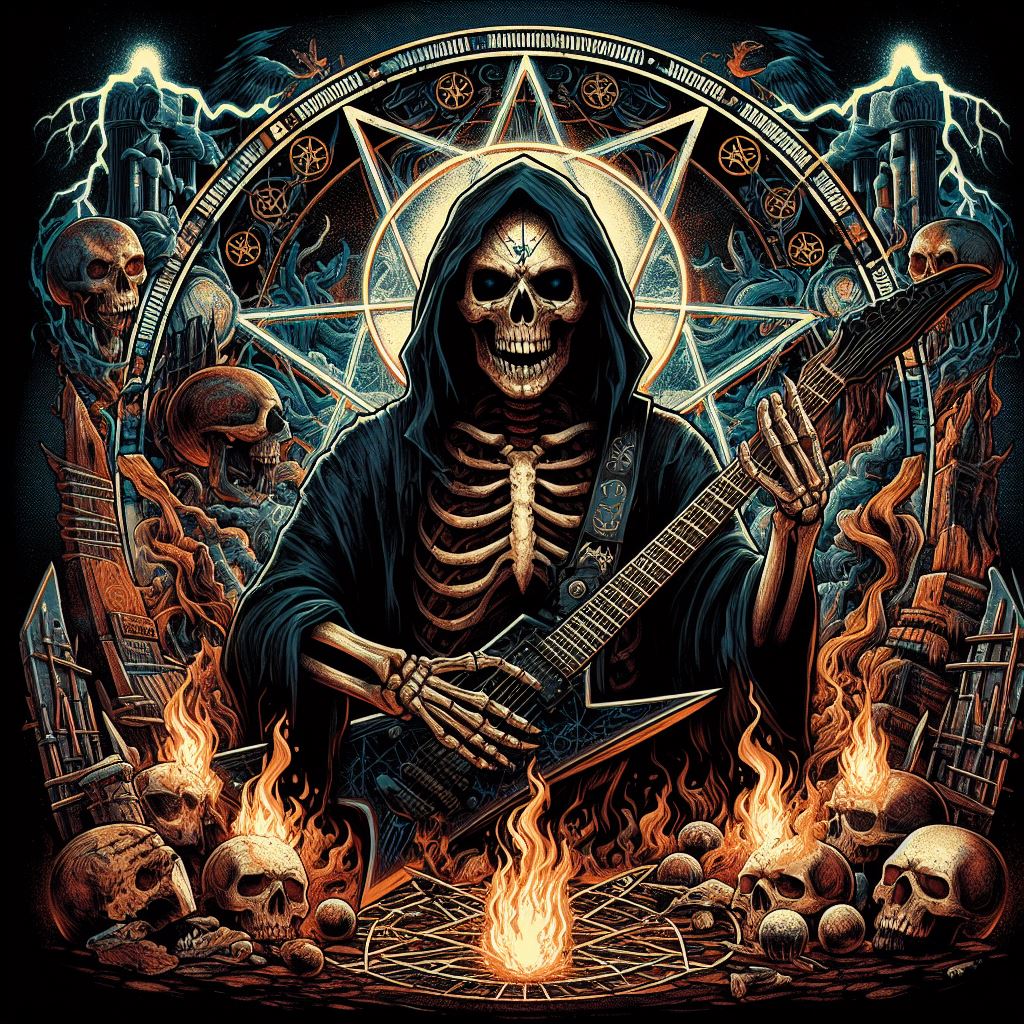Stratovarius, a name synonymous with soaring vocals, blazing guitar riffs, and intricate keyboard melodies, stands as a titan of the power metal genre. Their journey, spanning over 35 years, is a tale of evolution, triumph, and enduring influence.
From Black Sabbath to Black Water: The Early Seeds (1984-1989)
The story begins in 1984, in Helsinki, Finland. Three musicians – Tuomo Lassila (drums/vocals), Staffan Strahlman (guitar), and John Viherva (bass) – formed a band initially called Black Water. Their sound leaned heavily towards Black Sabbath and Ozzy Osbourne-influenced heavy metal. Strahlman, however, harbored a passion for classical music, which would soon infuse their music.
A series of lineup changes ensued, with Timo Tolkki (guitar) and Jyrki Lentonen (bass) joining the fold. Tolkki, a talented guitarist with a strong songwriting voice, would become a pivotal figure in shaping Stratovarius’ destiny. They recorded their first single, “Future Shock/Witch Hunt,” in 1988, showcasing a shift towards a more melodic and keyboard-driven sound.
Fright Night and Finding Their Voice (1989-1995)
1989 marked a turning point with the release of their debut album, “Fright Night.” Tolkki took over vocal duties, solidifying the band’s core sound. The album blended traditional metal with classical influences, evident in tracks like “Fright Night” and “Fire Dance.” While commercially modest, “Fright Night” laid the groundwork for their signature style.
Subsequent albums, “Dreamspace” (1994) and “Fourth Dimension” (1995), cemented Stratovarius’ position within the burgeoning power metal scene. Tracks like “Black Diamond” and “Fourth Dimension” showcased their penchant for complex arrangements, soaring vocals (courtesy of the newly recruited vocalist Timo Kotipelto), and Tolkki’s neo-classical guitar work.
Epic Success and Lineup Shifts (1996-2004)
The band’s golden age arrived in 1996 with the release of “Episode.” This critically acclaimed album featured epic tracks like “Forever Is a Long Time” and “Father Time,” solidifying their reputation for crafting majestic and emotionally charged metal anthems. “Episode” was followed by a string of successful albums, including “Visions” (1997), “Infinite” (2000), and “Elements Pt. 1” (2003), each pushing the boundaries of power metal with elaborate orchestral arrangements and progressive song structures.
However, amidst this commercial success, internal tensions began to rise. Tolkki’s increasingly dominant creative control caused friction within the band.
A New Era Dawns: Post-Tolkki Stratovarius (2004-Present)
The inevitable arrived in 2004 when Tolkki left Stratovarius. Despite losing their main songwriter, the remaining members – Kotipelto, Jens Johansson (keyboards), Jörg Michael (drums), and Lauri Porra (bass) – persevered. They recruited guitarist Matias Kupiainen and embarked on a new chapter.
The following albums, “Stratovarius” (2005) and “Polaris” (2009), showcased a renewed energy while retaining the core elements of their sound. Lineup changes continued, with Rolf Pilve returning on drums and new bassist Paolo Gregoletto joining the fold.
Stratovarius continues to be a force in the power metal scene. Recent albums like “Nemesis” (2013) and “Elysium” (2015) demonstrate their unwavering commitment to delivering epic and melodic metal anthems.
A Legacy of Power and Epic Grandeur
Stratovarius’ influence on the power metal genre is undeniable. They pioneered the use of keyboards and classical influences, creating a sound both aggressive and melodic. Their impact can be heard in countless bands that followed, solidifying their place as one of the genre’s most significant and enduring acts.
Despite lineup changes and internal struggles, Stratovarius continues to forge their path, captivating audiences worldwide with their signature blend of power, melody, and epic grandeur. Their legacy is a testament to the enduring power of great songwriting and the unwavering passion for crafting music that pushes boundaries and ignites the imagination.

Leave a Reply
You must be logged in to post a comment.